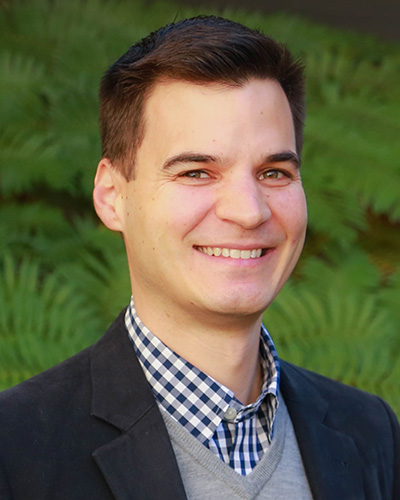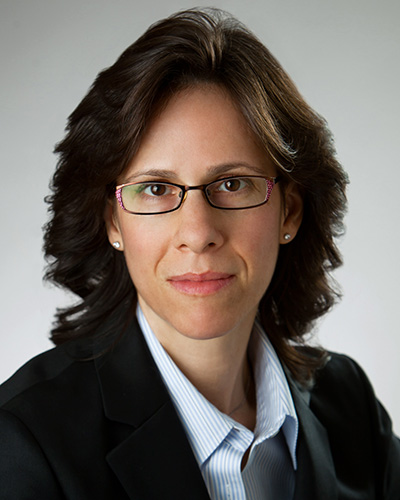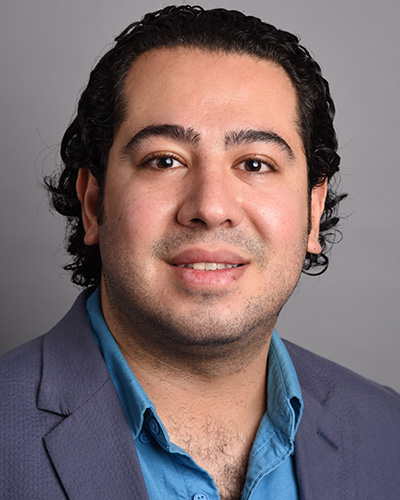In addition to in-person participations of the short course, we are also offering online participations this year for those who cannot attend in person due to pandemic-related limitations.
The online participants will access live streaming of the real-time lectures synchronously.
Short Course Registration Info
Short course registration includes a complete set of course notes. Payment can be made on line with MasterCard, Visa,
or American Express. Lunch and snacks for the breaks will be provided each day for in-person participants.
|
Registration Fees for In-Person Participations
|
Through 9/3/2021 |
After 9/3/2021 |
| Member* |
$850 |
$950 |
| Non-Member** (includes membership for 2022) |
$935 |
$1035 |
| Student Member* |
$400 |
$500 |
| Student Non-Member** (includes membership for 2022) |
$440 |
$540 |
|
Registration Fees for Online Participations
|
Through 9/3/2021 |
After 9/3/2021*** |
| Member* |
$425 |
$525 |
| Non-Member** (includes membership for 2022) |
$510 |
$610 |
| Student Member* |
$200 |
$300 |
| Student Non-Member** (includes membership for 2022) |
$240 |
$340 |
* Member rates are also available to non-members who are registered to attend the 92nd Annual Meeting.
** Non-members who are registered to attend the 92nd Annual Meeting may register for the short course at the member rates.
*** Registrations for in-person and online participations will close after Friday 1 October 2021.
Cancellations for the short course received by electronic mail (c/o The Local Arrangements Chair, Albert Co)
by September 22, 2021
will be refunded minus a $50 administrative charge. No refunds will be granted after that date. Typically each class is limited to 40 in-person participants.
Colloidal Gels: Formation, Structure, and Rheology
Matthew E. Helgeson, Chemical Engineering, UC Santa Barbara
Roseanna Zia, Chemical Engineering, Stanford University
Safa Jamali, Mechanical and Industrial Engineering, Northeastern University
Course Description
This short course will provide an introduction to the structure, dynamics, and rheology of colloidal gels. It is intended for researchers with a background in rheology
and rheological principles (experiment, theory, or simulation) and a working understanding of colloidal materials (including particles, emulsions, proteins, and other
materials in suspension). Attendees will benefit from pre-existing familiarity with the concepts of stress, viscoelasticity, non-Newtonian rheology, diffusion/Brownian
motion and colloidal-scale forces. For that audience, this course will serve as a first introduction to colloidal gelation and gel rheology. A particular emphasis of the
course is to build mechanistic connections between important rheological gel behavior and the microscopic details of interparticle interactions and structures. Gels can
be viewed as undergoing a life cycle of gelation, aging, yield, and re-formation with complex flow characteristics. As such, the course will progress from the various
routes to gelation to explaining aging behaviors widely observed in colloidal gels, to linear viscoelasticity, thixotropy, kinematic heterogeneities, yielding and flow.
Classical and advanced continuum-level models to describe such versatile rheology, and relevant model parameters/dimensionless groups that classify gel rheology will be
discussed. The course will include experimental and in silico demonstrations of gelation and rheological measurements of the resulting gels intended to provide a practical
foundation to guide their design and interpretation. During these demonstrations, impacts of important considerations such as inferring interparticle potentials for accurate
phase predictions, robust and reliable experimental protocols for gel preparation, wall slip and heterogeneous yield behavior, rejuvenation and shear history, shear banding,
and emergence of multiple length- and time-scales will be discussed.
Course Outline
Part 1. Colloidal gel formation and structure
-
Colloidal forces and interaction potentials; “flavors” of gelling colloidal systems (DLVO, depletion, polymer-colloid mixtures, responsive materials); measuring and
describing interactions in experiment and simulation.
-
Colloidal thermodynamics and phase (mis)behavior: equilibrium vs. non-equilibrium states, the importance of time in gel formation and rheology.
-
Mechanisms and criteria for gelation: percolation, “equilibrium” gels, attractive glasses, arrested phase separation.
-
Describing dynamics of attractive colloidal systems: Brownian motion and hydrodynamic interactions, importance for the gelation process; measuring dynamics in experiment
and simulation.
-
Kinetics of colloidal aggregation and gelation: reaction-diffusion descriptions, population balances and Smoluchowski theory; structural and rheological measures.
-
Morphology and structure of colloidal gels: fractals, clusters, heterogeneity; common structural descriptors (single particle scales; cluster scales; mesoscale
heterogeneity); internally ordered gels (crystals and anisotropic colloids); methods for characterizing structure in experiment and simulation.
Part 2. Colloidal gel linear viscoelasticity, aging and weakly nonlinear rheology (the yield point)
-
Practical aspects of rheological measurements on colloidal gels: loading and conditioning gels – to pre-shear or not? Wall slip and surface effects; shear localization
and banding; the role of aging in rheological measurement; advanced experimental methods (complex rheometric protocols; rheo-microscopy; rheo-SAN(X)S).
-
Evolution of rheology during gelation: from liquid to solid; what is a “gel point”, and how do we measure it?
-
Linear response rheology of “static” (non-aging) gels and relation to microstructure/dynamics.
-
Aging of gel structure and rheology: slow relaxation toward equilibrium; Smoluchowski’s ratchet; impact and mechanics of phase separation processes.
-
The yielding transition: nonlinear deformation from solid to liquid response; what is a “yield point” (is it a point?), and how do we measure it; what does it depend on?
-
“Simple” models for linear and weakly nonlinear gel rheology: Macroscopic descriptions (Bingham/Herschel-Bulkley models, fractional models, soft-glassy rheology),
microscopic descriptions (fractal network theory; mean-field theory; rigidity cluster analysis).
-
Complex phenomena in gel yielding: heterogeneous/”two-step” yielding; imposed stress vs. imposed strain; rate-dependent and re-entrant yielding.
-
Challenges and unresolved aspects of small/medium strain gel rheology.
Part 3. Nonlinear rheology and flows of colloidal gels
-
Response of gel structure to large strain flows: buildup/breakdown of cluster structure, hydrodynamic interactions, shear-induced anisotropy, extensional/compressional deformation.
-
Macroscopic phenomena: shear thinning, thixotropy and models thereof (Bingham/Herschel-Bulkley, SGR, etc.); conventional and contemporary understanding of their microstructural
origins (breakdown and buildup of cluster/network structure, hydrodynamics, etc.).
-
Constitutive modeling of colloidal gels: phenomenological models, non-local fluidity, etc.
-
Gel sedimentation and collapse.
-
Thermokinematic memory and rheological hysteresis in gels.
-
Non-homogeneous yielding, “static” vs. “dynamic” yielding, non-monotonic flow curves and shear banded flows in colloidal gels.
Demos (option by attendee interest)
-
1. Rheometer experiments on model irreversible and reversible gels; Loading and design of rheometric protocols; Kinetics of gelation and determination of gel point;
Characterization of linear viscoelasticity, yielding and thixotropy.
-
2. Simple Brownian dynamics/MD simulations of colloidal gel formation at rest and structuring in flow (using codes to be provided).
Instructors

Mathew E. Helgeson
UC Santa Barbara
Mathew E. Helgeson
is an Associate Professor of Chemical Engineering and the Interdisciplinary Research Group co-Leader in the Materials Research Laboratory at UC Santa Barbara.
Before joining the faculty at UCSB, he received his B.S. in Chemical Engineering from Carnegie Mellon University and his Ph.D. in Chemical Engineering
from University of Delaware, and performed postdoctoral research at MIT. Prof. Helgeson’s research focuses on the engineering of colloidal and multi-phase
materials with controlled structure and rheological properties, particularly through the use of flow and thermal processing. Toward this aim, a particular
focus of the Helgeson lab is the integration of rheological, structural and flow measurements to monitor material processing in situ. Helgeson’s research
has been recognized with early career awards from the National Science Foundation, Department of Energy, American Chemical Society and Neutron Scattering Society of America..

Roseanna Zia
Stanford University
Roseanna Zia is an Associate
Professor of Chemical Engineering at Stanford University and, by courtesy, Mechanical Engineering. She received her Ph.D. from the California Institute of Technology
in Mechanical Engineering in 2011 with Professor John F. Brady, for development of theory in colloidal hydrodynamics and microrheology. Zia subsequently conducted
post-doctoral study of colloidal gels at Princeton University, in collaboration with Professor William B. Russel. Zia began her faculty career at Cornell in January 2013,
then subsequently moved her research group to Stanford University in 2017.
Dr. Zia’s research includes developing micro-continuum theory for structure-property relationships of flowing suspensions, elucidating the mechanistic origins of the colloidal
glass transition, and microscopic modeling of reversibly bonded colloidal gels. Her research group further aims to unlock the fundamental connections between colloidal-scale
physics and life-essential processes in biological cells using theoretical colloid physics, biological modeling, and high-fidelity computational models.
Dr. Zia’s work has been recognized by the PECASE Award, the ONR Director of Research Early Career Award, the Office of Naval Research (ONR) Young Investigator award,
the NSF CAREER Award, the NSF BRIGE Award, the Publication Award from the Society of Rheology, and the Engineering Sonny Yau (’72) Teaching Award. Most recently she was
named an Otterson Faculty Fellow at Stanford.
Dr. Zia serves as an Associate Editor for the Journal of Rheology, and on the Advisory Board of the AIChE Journal.

Safa Jamali
Northeastern University
Safa Jamali is an Assistant Professor
of Mechanical and Industrial Engineering at Northeastern University. Safa received his BSc in Polymer Engineering from Amirkabir University in Tehran, and a MSc.
in “Engineering Rheology” from Catholic University of Louvain and University of Minho in Belgium and Portugal. He received his PhD from Case Western Reserve University’s
Macromolecular Science department working on dense suspensions rheology and shear-thickening, followed by a Postdoc training at MIT supervised by Bob Armstrong and Gareth McKinley.
He then joined Northeastern University in 2017, with his research group focused on computational methods for physics and rheology of particulate systems. His research interests
include biophysics of cell suspensions, science-based data-driven methods and machine-learning platforms, and physics of colloidal systems amongst other topics.